European pinewood
Our wood...
- ...comes from responsibly managed European forests.
- ...comes from the Pinus sylvestris (Scots pine)
- ...is pressure-treated (KOMO-certified). This process is chromium- and arsenic-free and is biologically harmless to humans and the environment.
- ...carries the FSC and/or PEFC certification. It originates from well-managed forests adhering to sustainability, social, and economic standards.



Wood is Nature..
Wood is a natural material with excellent properties. It is sturdy yet elastic.
Softwood has an open structure. This means it swells or expands when it absorbs moisture and shrinks when it releases moisture. This characteristic gives wood its unique properties!
The main characteristics of wood are:
1. Cracks, deformations, or warping
Cracks can occur as the wood dries. These drying cracks are natural features and do not affect the durability of the wood.
During drying, wood tends to deform. Uneven drying is often the cause of twisting or warping of the wood.
Especially in warm weather conditions, wood exposed to sunlight may shrink too quickly, resulting in changes in shape. Also, during extremely wet weather, wood materials can sometimes warp because they are moist on the top and dry on the bottom.
Our pressure-treated softwood is reasonably flexible. A slightly warped beam or plank can easily be straightened during assembly by hand or with a clamp, for example.
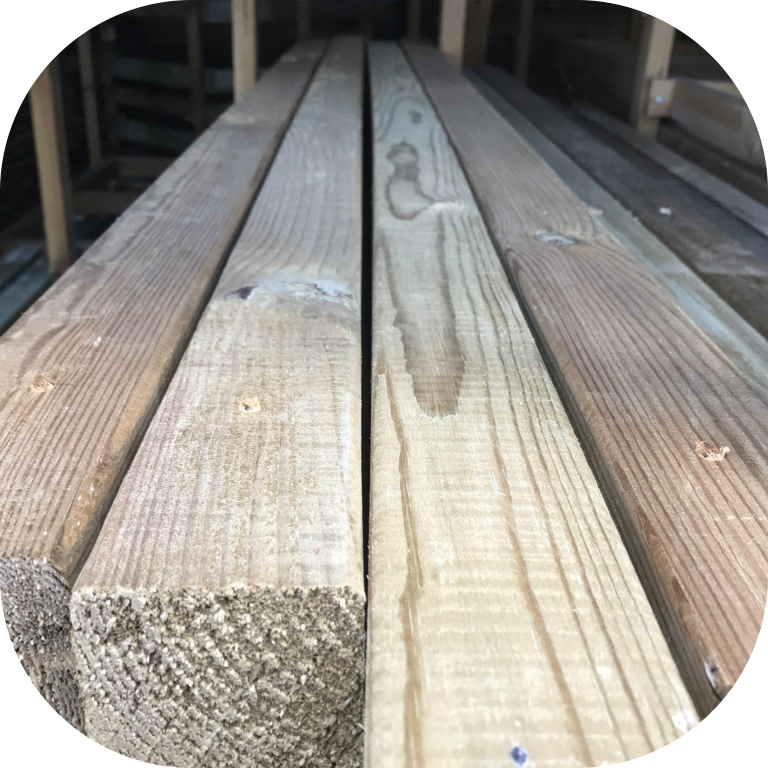
2. Knots and growth rings
Wood is a natural product. Depending on the species and age, wood has its own characteristic features. Knots, knots, and growth rings are part of these characteristics.
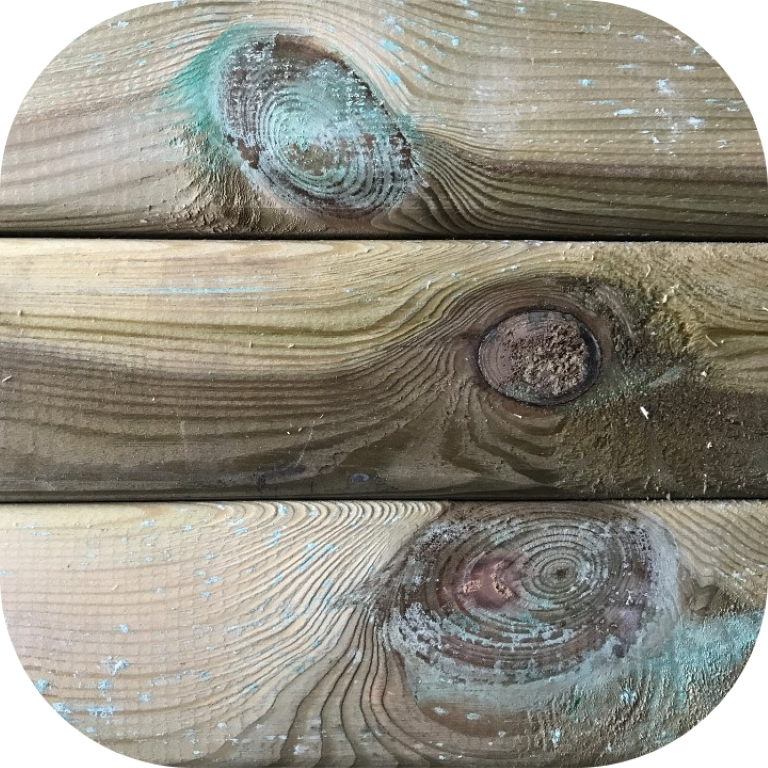
TIP: If a knot has come loose from the wood, you can easily reattach it with a little wood glue.
3. Rough surface
Our wood products are sawn (and often planed). Inaccuracies and roughness may occur in areas where the wood fibers surround the knots. If desired, these areas can be lightly sanded.
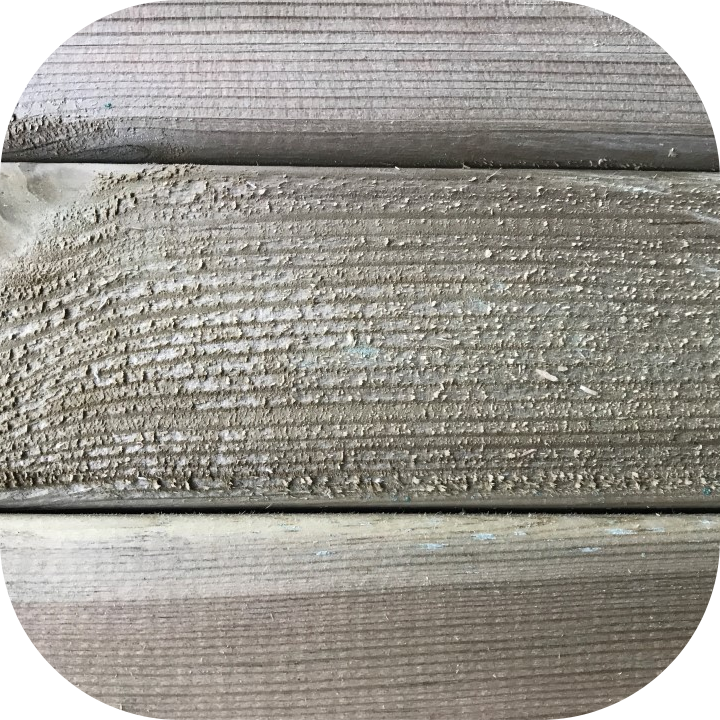
TIP: Our employees sort wood for quality. However, if there is still a large knot, slight curvature, or rough surface on the wood, try to use it on the non-visible side.
4. Green stains / Impregnation stains
Pressure-treated garden wood is impregnated under high pressure. The green (and sometimes white) stains occur when the impregnating agent reacts with the resin present in the wood.
Over time, these stains will disappear under the influence of sunlight (UV radiation).

5. Mold (white/black)
Mold stains may appear on the wood, often visible as white or black spots. Mold can develop in areas with relatively poor ventilation, such as inside a playhouse, the underside of a sandbox lid, or the underside of a roof.
These superficial mold spots do not affect the quality of the wood.
The likelihood of encountering mold is higher in autumn and winter. Due to weather conditions and UV light, these stains often disappear in spring and summer.
Mold spots can be easily removed with a cleaning solution or vinegar solution.
6. Discoloration
Wood can discolor due to exposure to sunlight (UV) and impregnation.
After the wood is impregnated, it will acquire a darker color. Sapwood will discolor differently from heartwood. The wood packs are impregnated as a whole, so the slats between the planks will be visible after impregnation. Exposure to UV radiation will gradually fade these color differences.
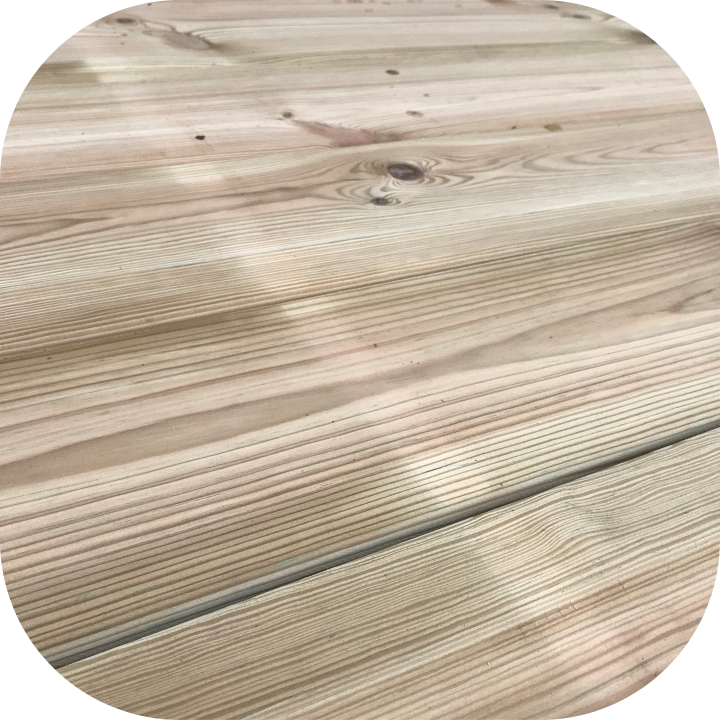
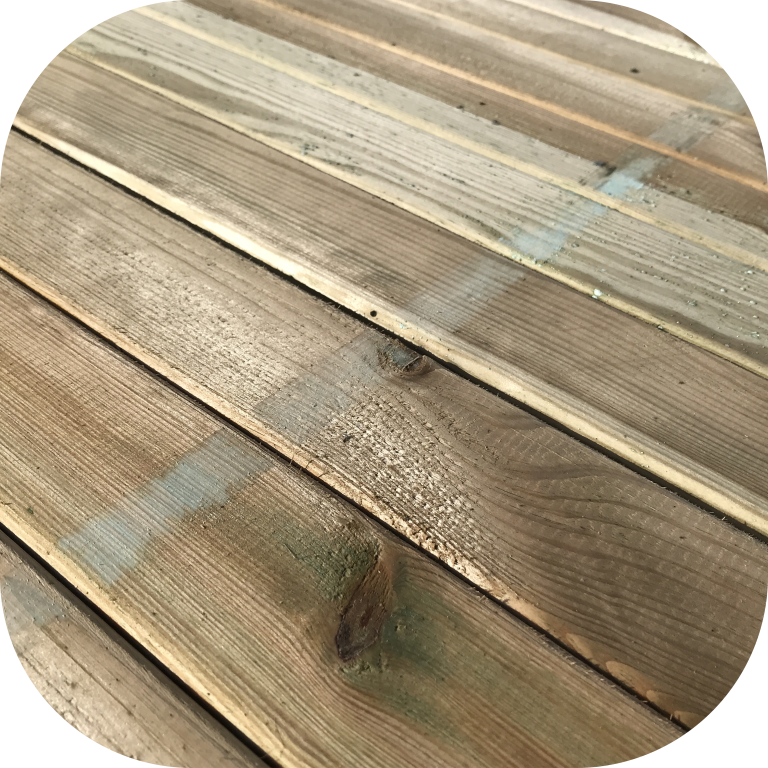
TIP: Try to process your material immediately after purchase. If this is not possible, store the wood in a dry and shady area. Exposure to direct sunlight can cause your wood to warp and twist more quickly.




